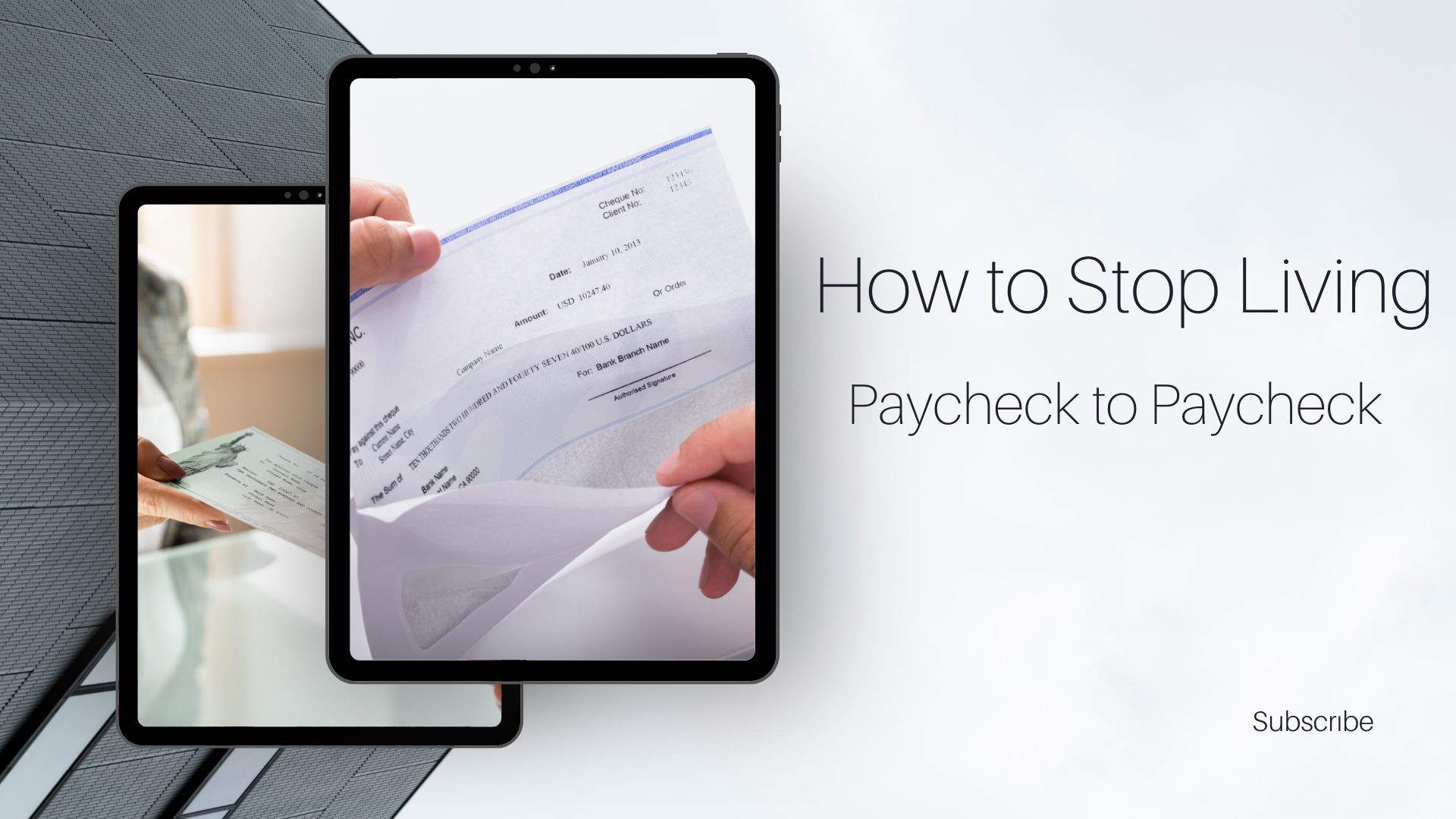To stop living paycheck to paycheck, you need to get on a budget, prioritize your essential expenses, cut unnecessary costs, build an emergency fund, get rid of debt, find ways to increase your income, and live below your means. Consider downsizing certain aspects of your life that are straining your finances.
It’s important to break the cycle and take control of your financial situation by making conscious choices and setting realistic goals. By implementing these steps, you can achieve financial stability and security, freeing yourself from the stress of living paycheck to paycheck.
Steps To Stop Living Paycheck To Paycheck
Get on a budget: Create a realistic budget that outlines your income and expenses. This will help you track your spending and identify areas where you can cut back.
Reduce expenses: Take a close look at your monthly expenses and identify areas where you can make cuts. This could include things like eating out less, canceling unnecessary subscriptions, or finding cheaper alternatives for necessities.
Increase income: Look for ways to increase your income, such as asking for a raise or finding a side gig. This extra money can help you build savings and reduce reliance on a single paycheck.
Strategies For Long-term Financial Stability
To stop living paycheck to paycheck and achieve long-term financial stability, there are several strategies you can implement. One important step is to build an emergency fund. This fund acts as a safety net in case of unexpected expenses or job loss. Start by setting aside a small portion of each paycheck until you have saved at least 3-6 months’ worth of living expenses. Another crucial strategy is to pay off debt. Begin by prioritizing high-interest debt and creating a plan to consistently make payments. Consider using the snowball method, where you tackle the smallest debts first and then move on to larger ones. Lastly, actively save and invest. Set up automatic contributions to a savings account or retirement fund and explore investment options that align with your financial goals. By implementing these strategies, you can break the paycheck-to-paycheck cycle and secure your financial future.
Frequently Asked Questions Of How To Stop Living Paycheck To Paycheck
What Is The 70 20 10 Rule Money?
The 70 20 10 Rule for money is a financial guideline that suggests allocating 70% of income towards living expenses, 20% towards savings, and 10% towards investments or debt repayment. This rule aims to help individuals achieve financial stability and long-term wealth accumulation.
Is It Stressful To Live Paycheck To Paycheck?
Living paycheck to paycheck can be stressful due to the lack of savings and financial vulnerability.
Does Living Paycheck To Paycheck Mean You Have No Savings?
Living paycheck to paycheck usually means spending most of your salary on expenses and having little to no savings. It also refers to being financially vulnerable if you suddenly lose your job.
How Do I Pay Off Debt When I Live Paycheck To Paycheck?
To pay off debt when living paycheck to paycheck: 1. Create a budget. 2. Cut unnecessary expenses. 3. Start an emergency fund. 4. Focus on paying off debt. 5. Look for ways to increase your income.
Conclusion
Breaking the cycle of living paycheck to paycheck requires a strategic approach. Start by creating a budget and prioritizing essential expenses. Cut back on unnecessary expenses and consider downsizing certain aspects of your life. Building an emergency fund and eliminating debt are crucial steps towards financial stability.
Additionally, increasing your income and living below your means can provide some breathing room. By following these steps, you can stop the stressful cycle and pave the way to a more secure financial future.

Corel Benzamin stands as a distinguished figure in the realms of real estate and startup investments, showcasing an impressive track record as an expert in these dynamic fields. Armed with a comprehensive understanding of market trends and investment strategies, Corel has carved a niche for themselves through insightful analyses and successful ventures. Their journey is marked by a blend of financial acumen and entrepreneurial foresight, translating into tangible success stories. Corel’s prowess in navigating the intricacies of real estate and startup landscapes has not only positioned them as a sought-after professional but has also contributed to the broader discourse on investment practices. Whether unraveling the intricacies of property markets or deciphering the intricacies of emerging startups, Corel Benzamin’s expertise continues to be a beacon for those seeking valuable insights and guidance in the world of real estate and startup investments.


